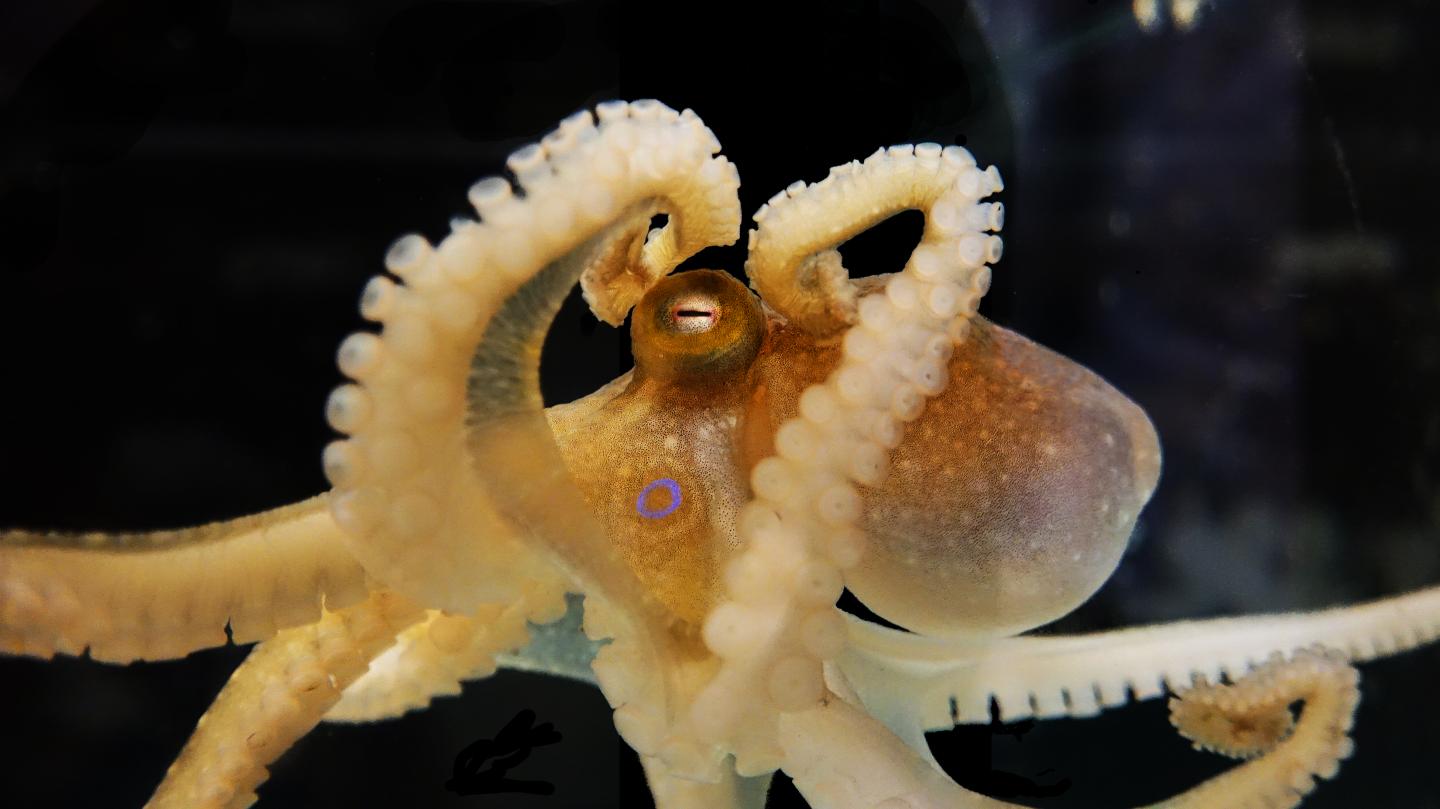
Researchers from UC Berkeley, the Okinawa Institute of Science and Technology Graduate University and the University of Chicago have sequenced and annotated the first cephalopod genome An international team of scientists has sequenced the genome of an octopus, bringing researchers closer to discovering the genes involved in the creature's unusual biology, including its ability to change skin color and texture and a distributed brain that allows its eight arms to move independently.
The team that sequenced and annotated the genome of the common California two-spot octopus (Octopus bimaculoides) was led by scientists from the University of California, Berkeley, the Okinawa Institute of Science and Technology Graduate University (OIST) and the University of Chicago. The researchers will publish their findings in the Aug. 13 issue of the journal Nature.
The researchers discovered striking differences between the genomes of the octopus and other invertebrates, including widespread rearrangements of genes and a dramatic expansion of a family of genes involved in neuronal development that was once thought to be unique to vertebrates.
"The octopus nervous system is organized in a totally different way from ours: The central brain surrounds the esophagus, which is typical of invertebrates, but it also has groups of neurons in the arms that can work relatively autonomously, plus huge optic lobes involved in vision," said Daniel Rokhsar, who co-led the project along with Clifton Ragsdale, of the University of Chicago. "The sequencing was an opportunity to look at the genome and see what we can learn about the unique brain and morphology of the octopus."
Understanding how the octopus's distributed brain interacts with its eight arms could, for example, help engineers design flexible, prehensile arms for robots, he said. In some environments, such as underwater, these could work better than jointed arms and legs.
Rokhsar, a UC Berkeley professor of molecular and cell biology and of physics, also heads OIST's Molecular Genetics Unit as a visiting professor.
A most intelligent invertebrate
With large, highly developed brains, cephalopods are the most intelligent invertebrates on earth and have demonstrated elaborate problem-solving and learning behaviors, Rokhsar noted.
"We have already found several gene types that are dramatically expanded in the octopus relative to other vertebrates, and we think they play a critical role allowing a new level of neuronal complexity to be reached in invertebrates," he said.
These include a family of signaling molecules called protocaderins, which regulate neuronal development and short-range interactions between neurons, and a family of transcription factors called zinc fingers, which are mainly expressed in embryonic and nervous tissues and are thought to play roles in brain development.
"The octopus genome makes studies of cephalopod traits much more tractable, and now represents an important point on the tree of life for comparative evolutionary studies," said Ragsdale, an associate professor in neurobiology and organismal biology and anatomy at the University of Chicago. "It is an incredible resource that opens up new questions that could not have been asked before about these remarkable animals."
The project was initiated by Nobel Laureate Sydney Brenner, the founding president and a distinguished professor of OIST.
The first intelligent life on earth
Cephalopods, which include not only octopus but also squid, cuttlefish and nautilus, emerged as predators in the ancient oceans over 400 million years ago. Among the most successful were the ammonites, which dominated the oceans in the Devonian Period and are common fossils today. They died out 66 million years ago in the same mass extinction that did in the dinosaurs.
"They were the first intelligent beings on the planet," said Brenner. In the future, OIST plans to sequence several squid species and the Okinawan octopus, which Rokhsar hopes will become a model organism for studying cephalopod biology.
"The reason for looking broadly at several different types of cephalopods is to see what is conserved among them," he said. "What is similar among all cephalopods is probably important to being a cephalopod."
The researchers also used the genome to track down the genes involved in adaptive coloration, which allows the octopus to change its skin color and texture in order to blend into its environment and escape predation.
"We've found hundreds of novel genes that don't have counterparts in other animals and may be involved in this unique camouflage process," Rokhsar said.
The genome could also help uncover the genetic basis for other octopus innovations, such as their elaborate prehensile arms with suckers used to sense chemicals in the water as well as feel and grasp; their ability to regenerate their limbs; a propulsion system that allows them to jet around underwater; camera-like eyes that are more like humans than other invertebrates; and the fact that they have three hearts to keep blood pumping across their gills.
Source: University of California - Berkeley
 Print Article
Print Article Mail to a Friend
Mail to a Friend
